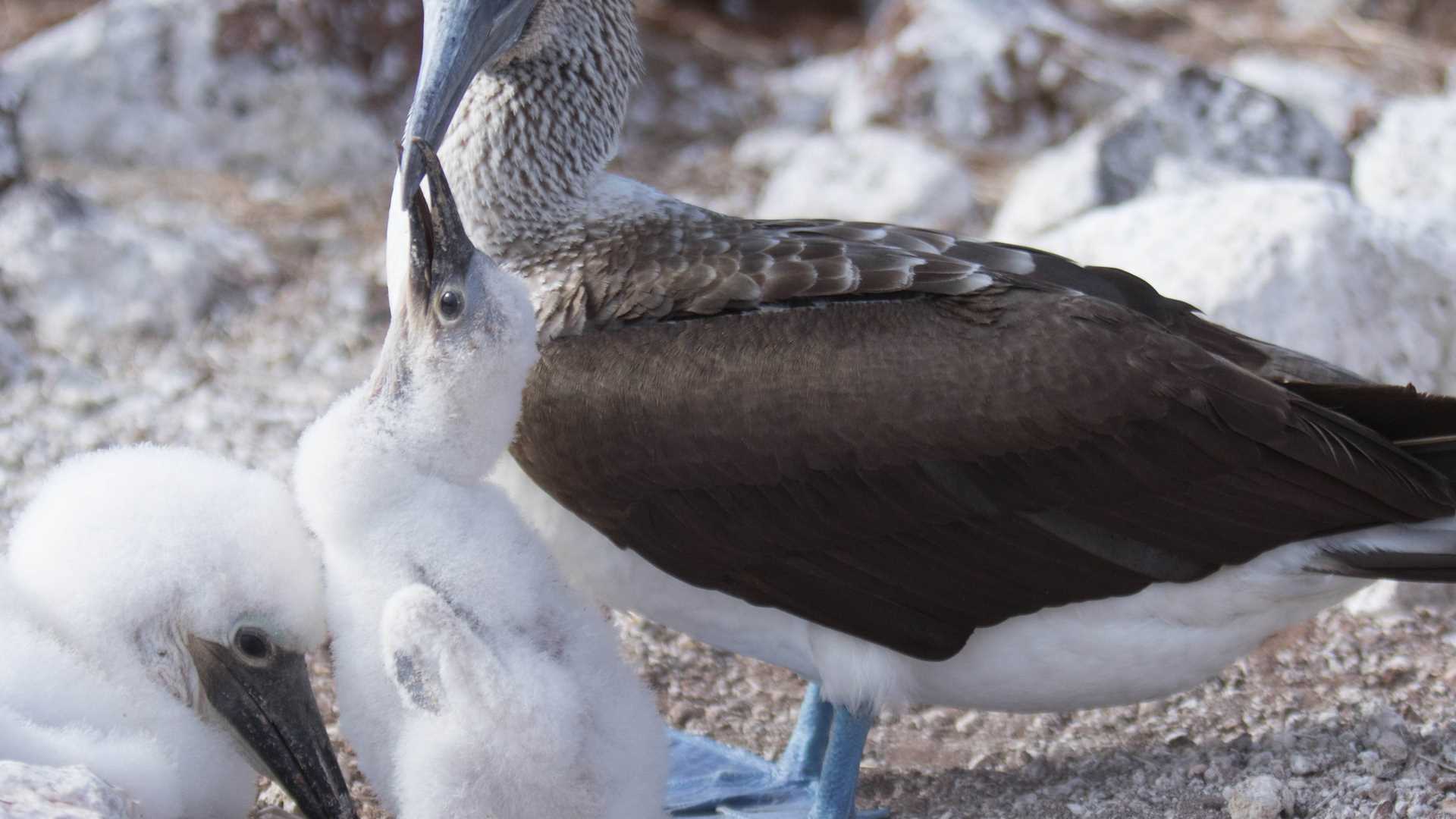Today we had the best chance to learn about frigatebirds in Galapagos, because North Seymour Island is the best place to see them all year round. Most of the Galapagos animals have a breeding and non-breeding season, but the frigate birds on this small island are the exception to this rule. No matter what time of the year we visit this island, we can observe them at various stages of their life cycle, including juveniles, chicks still in nests, and even male frigates with their red fully inflated pouches in order to attract a mate.
What a privilege to have the opportunity to learn about this species, which has adapted several different hunting techniques over the years in order to survive in this unforgiving environment—even stealing from each other or other bird species can be a special adaptation in order to survive. Frigates are very sophisticated marine birds, and they are truly built to fly—they are able to spend several days at flight over the open ocean, looking for food. Scientists have discovered that during these long trips, they can rest half of their brain while the other half remains alert, switching back and forth in order to sleep while still in flight.
Apart from frigate birds we also had the opportunity to see land and marine iguanas, swallow-tailed gulls, pelicans, finches and hundreds of blue-footed boobies nesting right next to our trail. During this time of year, Galapagos is facing dry conditions and the water temperature has dropped a few degrees. This means that there is more food in the ocean available for sea birds, and other marine creatures as well.
We returned to the National Geographic Endeavour for lunch, and after two hours of navigation, we arrived to Rabida Island. We finally had the opportunity to explore the underwater life of Galapagos, which is another breathtaking experience.
We finished our day with a fantastic walk along a red sandy beach, admiring the scenery and the beautiful sunset.









